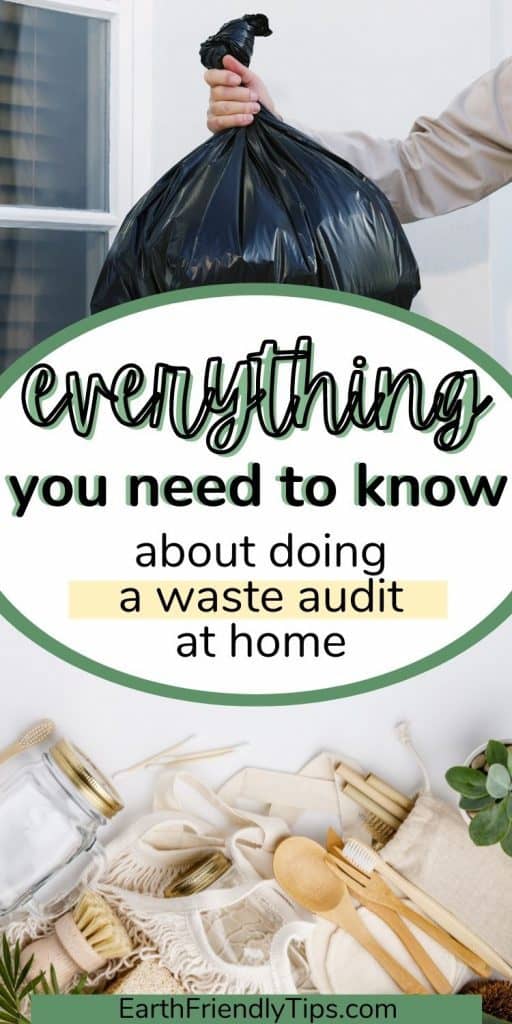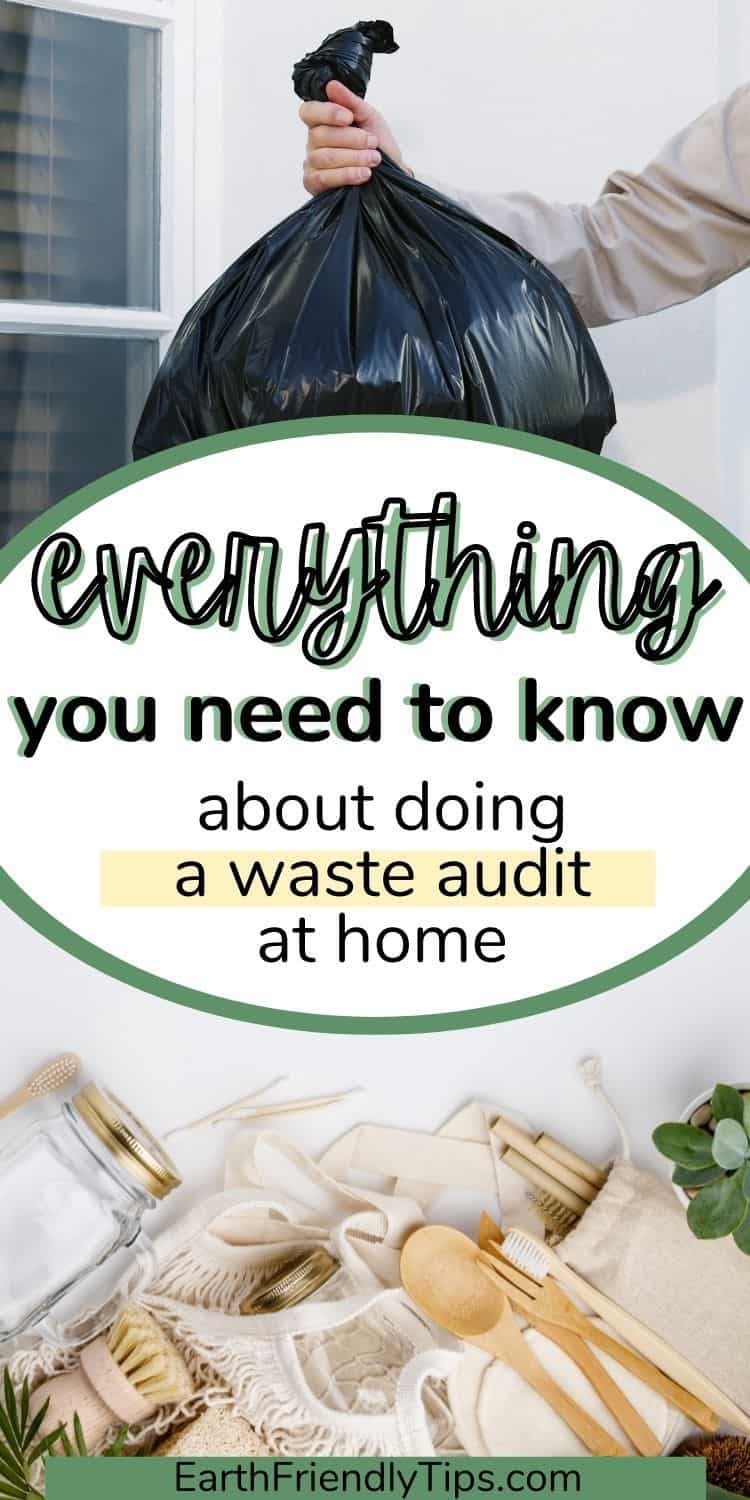How to Do a Waste Audit at Home
When you’re ready to start cutting back on your waste, an important step you should take is completing a waste audit. But what is a waste audit? And how in the world do you do a waste audit?
According to the EPA, the average American generates 4.9 pounds of waste a day. Do you wonder whether you produce more or less waste? You can find out by conducting a home waste audit.
In this helpful guide we’ll take a look at what a home waste audit is, why it can help you pinpoint exactly where you need to start cutting waste, and how to do a waste audit at home.
What Is a Home Waste Audit?
There’s an old saying you’ve probably heard before: knowledge is power. When it comes to reducing waste, knowing how much you produce can help you change your behavior and make better choices that help the environment.
Related: Genius Eco-Friendly Alternatives to Common Household Products
A home waste audit is a simple task where you collect and sort all of your waste during a set period of time. After you complete a waste audit, you can identify patterns and discover areas where you need to improve.
While it might sound hard (and a tad bit messy) a home waste audit isn’t that complicated. By following these easy steps, you can complete your own audit and immediately start coming up with ways you can reduce your waste.
Related: 55+ Amazing Alternatives to Single-Use Plastic
How to Do a Waste Audit at Home
When you’re ready to complete your own waste audit at home, just follow these 6 simple steps.
1. Choose Your Timeline
The first step in doing a waste audit is determining how long you want to track your output. For the best results, try to do your audit over 7 days.
However, make sure you don’t have any special events or activities happening during that week that could skew your results, such as holidays, parties, family trips, or missing/extra people in your house.
2. Collect Your Trash
Once you have your dates set for your audit, it’s time to start collecting your trash. There are several ways you can tackle this, so pick the one that’s easiest for you to handle.
You can throw everything into your garbage bags like you normally do. Just keep in mind that you’ll be sorting through all this garbage at the end of the week. So it might get kinda gross if you’re trying to peel paper envelopes away from rotting food waste.
Related: The Best Biodegradable Garbage Bags
If you already have a compost bin set up at home, awesome! Keep it going! Then you won’t have to deal with any squishy apple cores and slimy banana peels at the end of your audit.
Related: Everything You Need to Know About How to Start Composting
On the other hand, if you don’t have a compost bin set up yet, I recommend keeping a separate container where you can throw away your food waste. This simply keeps things cleaner and a little more sanitary.
If you want to make things easier on yourself on audit day, you can even use multiple bins or trash cans with labels on them, such as glass, plastic, paper, food waste, and miscellaneous.
For complete accuracy, try to remember to bring home waste you generate during the day when you’re away from home.
3. Prepare Your Area
Once your week of collecting garbage has ended, it’s time to take a look at what you threw away. You’ll want to do your audit in a large, open space where you have room to spread out.
Ideally, you want to do it inside to make sure wind doesn’t blow your garbage away. However, you should also try to do your audit on a surface that’s easy to clean, such as a table, tile floor, or concrete floor. Try not to do it on carpet floors or rugs to protect them from stains.
Related: How to Make an Incredibly Effective DIY Carpet Stain Remover
No matter where you decide to do your audit, I highly recommend you spread some type of tarp or other protective cover over your area. This makes clean up so much easier!
4. Sort Your Waste
Now you’re ready to get into the nitty gritty part of your audit: sorting your waste. You’re going to create four sections on your tarp:
- Items you can recycle at the curb (plastic bottles, glass, metal, paper)
- Items you can recycle but not at the curb (plastic bags, Styrofoam, batteries)
- Organic waste (food scraps, compostable cardboard and paper)
- Everything else
5. Record Your Results
After you have your waste sorted into each section, it’s time to record your results. Write down each item and take note of how many you have.
Related: 13 Simple Ways to Reduce Food Waste at Home
Now you have a pretty good idea of how much waste your household produces in a week. More importantly, you know exactly what type of waste your household produces. With this information, you can move to the last step of your household waste audit.
6. Come Up With a Plan
Once you know how much waste and what types of waste your household produces, you’ve come to the most important part of the waste audit: coming up with a plan.
At this point, it should be pretty easy to see where most of your waste is coming from, so you should be able to start formulating some ideas on how you can reduce it.
For instance, is most of your waste coming from the kitchen? Then you might want to check out these tips on how to reduce waste in the kitchen. Or, more specifically, you might find these tips on zero waste grocery shopping even when you don’t have a nearby bulk grocery store helpful.
Did you notice a lot of unexpected waste coming from your bathroom? These tips on easy swaps for an eco-friendly bathroom might be useful. Here are several other posts that you can check out to help you reduce waste around your entire house:
How to Do a Waste Audit at Home
It’s very hard to start reducing waste until you know exactly where you’re producing the most waste. That’s why a home waste audit is so important. Fortunately, thanks to this simple six-step plan, you can quickly and easily complete a waste audit and start your journey to a more eco-friendly life!
More Outstanding Eco-Friendly Tips
Did you find this guide on how to do a waste audit helpful? Are you looking for even more excellent tips that can help you with green living? Then please be sure to check out some of our other popular posts:




Leave a Reply